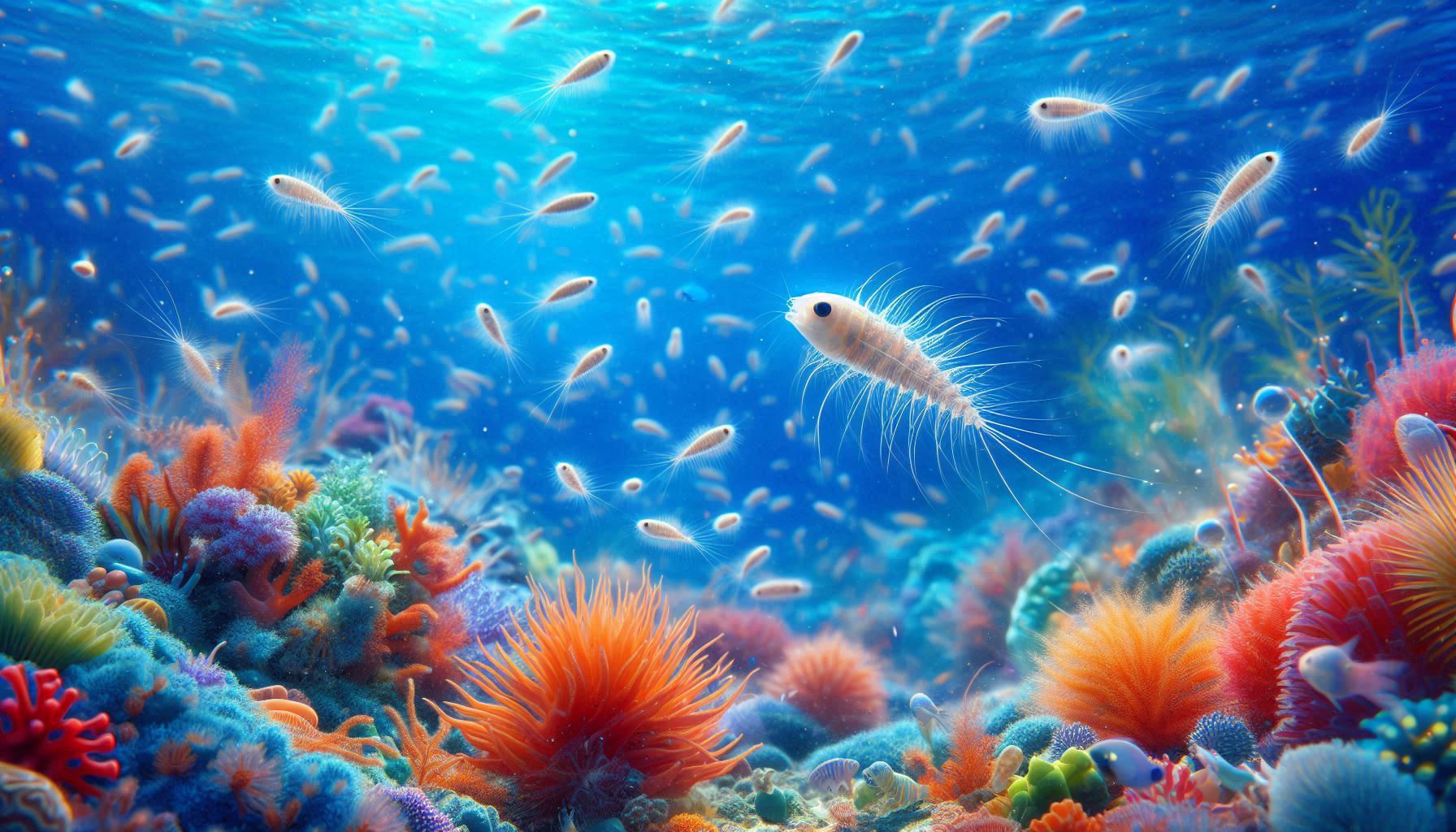When studying marine plankton, copepods came up as one of the most abundant multicellular organisms on Earth. Copepods are crustaceans measuring around 1mm in size, and are zooplankton found almost everywhere in the waters of the Earth, even being found in the Imperial Palace.
They live in the ocean from the surface to the deep sea, and apparently have the role of transferring the energy generated by phytoplankton through photosynthesis to higher levels of the food chain. The amount of energy they produce is roughly equivalent to half of the total plant production on Earth, so copepods are also called the “little giants of the ocean.” Copepods are amazing.
https://blog.canpan.info/oprf/archive/1990
Most fish species feed primarily on copepods during their larval and juvenile stages, and it seems that Pacific saury, anchovy, the whale shark, the world’s largest fish, and the blue whale, the largest animal in history, also feed primarily on zooplankton, including copepods. For this reason, they are sometimes called “rice of the sea.” Copepod feces are pellet-shaped and covered with a membrane, and as a stable form of marine snow, they deliver nutrients to the deep sea like snow falling in the ocean.
https://cwmd.kumamoto-u.ac.jp/shiminkouza/shiminkouza_h21/h21_shimanaga.html
Also, some species of copepods seem to glow for reproduction and to protect themselves from predators, and the luminescent enzyme luciferase that copepods possess seems to glow quite brightly despite its small size. There is also a theory that some luminescent fish obtain the luminescent enzyme by eating copepods. It is amazing that they can emit light.
There are also copepods that do not emit light but change the wavelength of reflected light to glow blue or become transparent. In particular, the species Saphyrina lives in the surface layers of tropical and subtropical regions and is also known as the “sapphire of the sea.” The honeycomb structure inside Saphyrina’s shell shifts the reflected light to the shorter wavelength side, so it appears to glow blue or purple, and when it shifts into the ultraviolet range it becomes invisible to the human eye and appears transparent. It’s truly optical camouflage.
https://www.chem-station.com/blog/2016/03/Sapphirinacopepod.html
Copepods are amazing because they play an important role in the food chain and support the ecosystem. It’s strange that they have the characteristic of luminescence, but I wonder if there is some meaning to their luminescence. It’s amazing that there are the most copepods on Earth. The Earth’s ecosystem is amazing.


